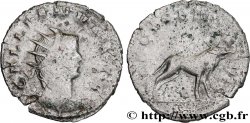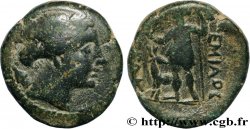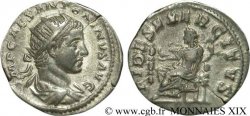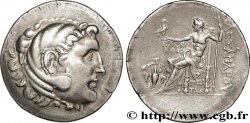Not available.
Item sold on our e-shop
Price : 155.00 €
Item sold on our e-shop
Price : 155.00 €
Type : Antoninien
Date: 266-267
Mint name / Town : Cyzicus
Metal : billon
Millesimal fineness : 50 ‰
Diameter : 22,5 mm
Orientation dies : 6 h.
Weight : 4,12 g.
Rarity : R3
Coments on the condition:
Exemplaire sur un flan très large, parfaitement centré des deux côtés et les grènetis complets. Petit portrait de style fin. Revers bien venu à la frappe. Patine gris foncé avec des reflets métalliques
Catalogue references :
Obverse
Obverse legend : GALLIENVS AVG.
Obverse description : Buste radié, drapé et cuirassé de Gallien à droite, vu de trois quarts en arrière (A2).
Obverse translation : “Gallienus Augustus”, (Gallien auguste).
Reverse
Reverse legend : SALV-S AVG/ SPQR.
Reverse description : Salus (la Santé) drapée debout à droite, tenant un serpent de la main droite et le nourrissant de la main gauche.
Reverse translation : “Salus Augusti”, (La Santé de l’auguste).
Commentary
Poids très lourd. Avec les restes de son argenture superficielle. Rubans de type 3. Dans son corpus, R. Göbl n’a recensé que deux exemplaires pour ce type dont un provenant du Kunsthistorisches Museum de Vienne (W. 83.965). C’est le troisième exemplaire recensé.
Very heavy weight. With the remains of its surface silvering. Type 3 ribbons. In his corpus, R. Göbl only identified two examples of this type, one of which comes from the Kunsthistorisches Museum in Vienna (W. 83.965). This is the third example identified.
Very heavy weight. With the remains of its surface silvering. Type 3 ribbons. In his corpus, R. Göbl only identified two examples of this type, one of which comes from the Kunsthistorisches Museum in Vienna (W. 83.965). This is the third example identified.








 Report a mistake
Report a mistake Print the page
Print the page Share my selection
Share my selection Ask a question
Ask a question Consign / sell
Consign / sell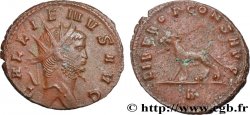
 Full data
Full data